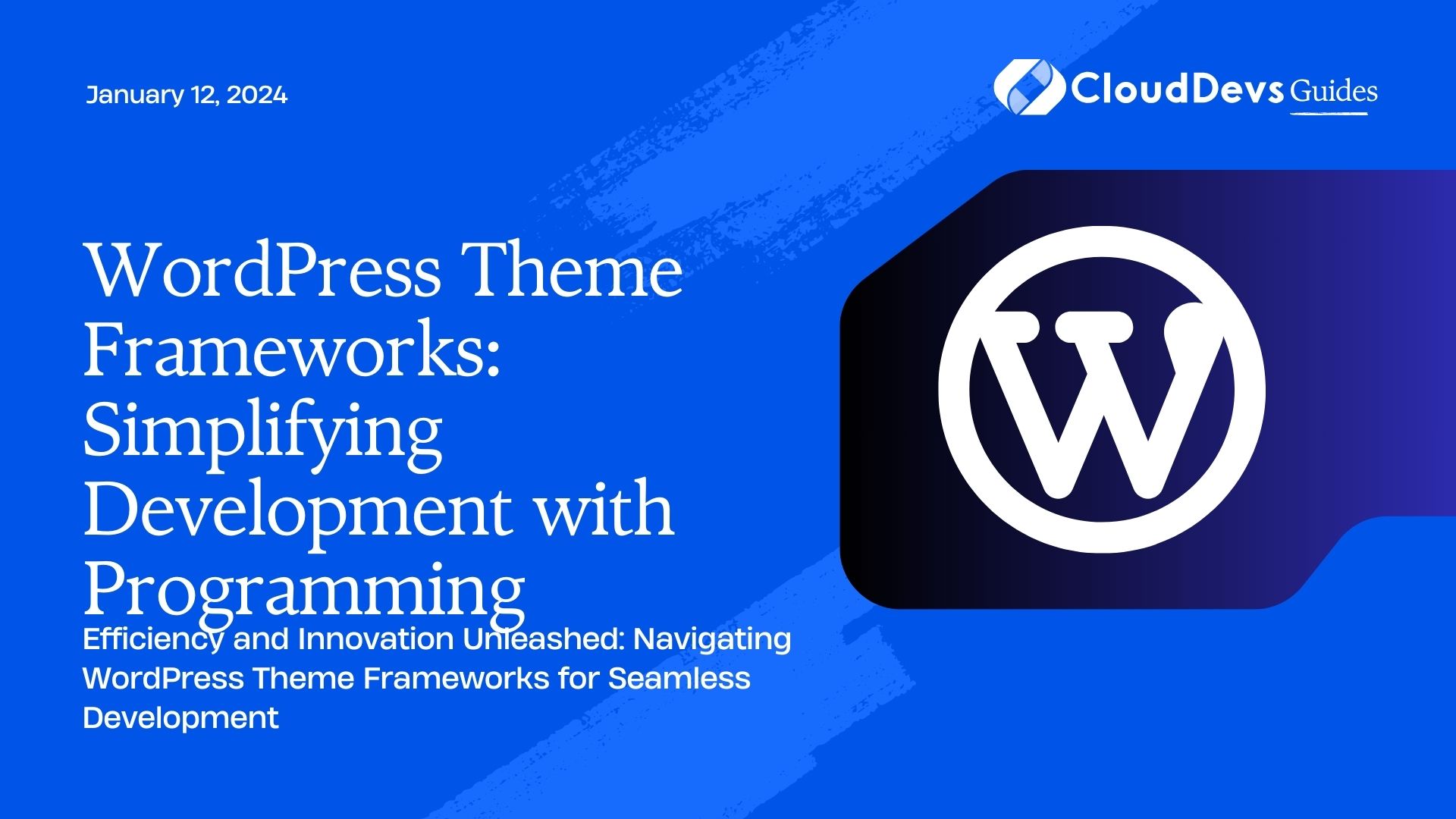WordPress Theme Frameworks: Simplifying Development with Programming
In the ever-evolving landscape of web development, building a WordPress theme that seamlessly integrates design and functionality has become both an art and a science. While the creative aspect of design can’t be overlooked, the science of efficient programming plays a pivotal role in ensuring a smooth user experience and maintainable codebase. This is where WordPress theme frameworks come into play, offering developers a set of tools, best practices, and pre-built components to simplify and accelerate the development process.

Table of Contents
1. The Essence of WordPress Theme Frameworks:
At its core, a theme framework is a foundation upon which WordPress themes can be built. It provides a structured and organized approach to designing and developing themes, allowing developers to focus on customizations rather than reinventing the wheel. By following the principles of modular programming and code reusability, theme frameworks facilitate faster development, easier maintenance, and enhanced scalability.
2. Key Benefits of Using Theme Frameworks:
2.1. Consistency in Design and Code:
Theme frameworks promote consistent design and coding practices across different projects. This uniformity ensures that your themes not only look similar but also follow the same code standards, making maintenance and updates significantly easier.
2.2. Rapid Prototyping:
Frameworks come with a plethora of pre-designed components and templates that can be quickly customized to fit your project’s requirements. This speeds up the prototyping phase and allows developers to focus on refining the unique aspects of the theme.
2.3. Efficient Updates and Maintenance:
As WordPress evolves, theme frameworks are updated to remain compatible with the latest version. By using a framework, you can ensure that your themes remain functional and secure without extensive rework after each WordPress update.
2.4. SEO and Performance Optimization:
Many theme frameworks are designed with SEO and performance optimization in mind. These frameworks often generate clean and efficient code, which contributes to faster load times and better search engine rankings.
2.5. Community Support:
Popular theme frameworks often have active communities of developers, designers, and users. This support network can be invaluable for troubleshooting, sharing ideas, and learning from others’ experiences.
3. Exploring Popular WordPress Theme Frameworks:
3.1. Genesis Framework:
The Genesis Framework is one of the most well-known and widely used WordPress theme frameworks. Developed by StudioPress, it provides a secure and search-engine-optimized foundation for building themes. Genesis follows a child theme approach, where developers create customized themes that inherit core functionality from the parent framework.
php
// Example of a Genesis child theme's functions.php
add_action('genesis_meta', 'custom_theme_setup');
function custom_theme_setup() {
// Custom theme setup code here
}
Underscores (formerly _s):
Underscores is a starter theme developed by Automattic, the parent company of WordPress. It is designed to be a minimalistic and lightweight foundation for building custom themes. Developers can add the desired features and styling while keeping the codebase clean and efficient.
scss
/* Example of Underscores styles.scss */
.site-header {
background-color: #f4f4f4;
// Additional styling here
}
3.2. BootstrapWP:
For developers who are familiar with the Bootstrap front-end framework, BootstrapWP offers a seamless integration of Bootstrap components into WordPress themes. This framework streamlines the process of creating responsive and visually appealing themes.
html
<!-- Example of using BootstrapWP classes -->
<div class="container">
<div class="row">
<div class="col-md-6">
<!-- Content here -->
</div>
<div class="col-md-6">
<!-- Content here -->
</div>
</div>
</div>
4. Best Practices When Working with Theme Frameworks:
4.1. Start with a Plan:
Before diving into development, outline the features, layout, and design elements you want to incorporate into your theme. Having a clear plan will help you choose the right framework and customize it effectively.
4.2. Choose a Suitable Framework:
Not all frameworks are created equal. Consider the project’s requirements, your familiarity with the framework, and the community support it offers when selecting a theme framework.
4.3. Understand Child Themes:
If the framework follows a parent-child theme structure, take the time to understand how child themes inherit and extend the parent’s functionality. This separation ensures that your customizations remain intact during updates.
4.4. Customize Thoughtfully:
While frameworks provide a head start, resist the temptation to overcrowd your theme with unnecessary features. Customizations should align with the project’s goals and enhance the user experience.
4.5. Stay Updated:
Regularly update your chosen framework and review any changes in the framework’s documentation. Staying current will ensure that your theme remains secure, compatible, and optimized.
Conclusion
WordPress theme frameworks have revolutionized the way developers approach theme development. By leveraging pre-built components, established coding standards, and best practices, developers can streamline the process and focus on delivering unique and engaging user experiences. Whether you opt for the Genesis Framework’s versatility, Underscores’ minimalism, or BootstrapWP’s responsiveness, these frameworks are powerful tools that simplify development while upholding the importance of efficient programming. Embrace the opportunities offered by theme frameworks, and watch your WordPress themes come to life with enhanced efficiency and innovation.
Table of Contents








